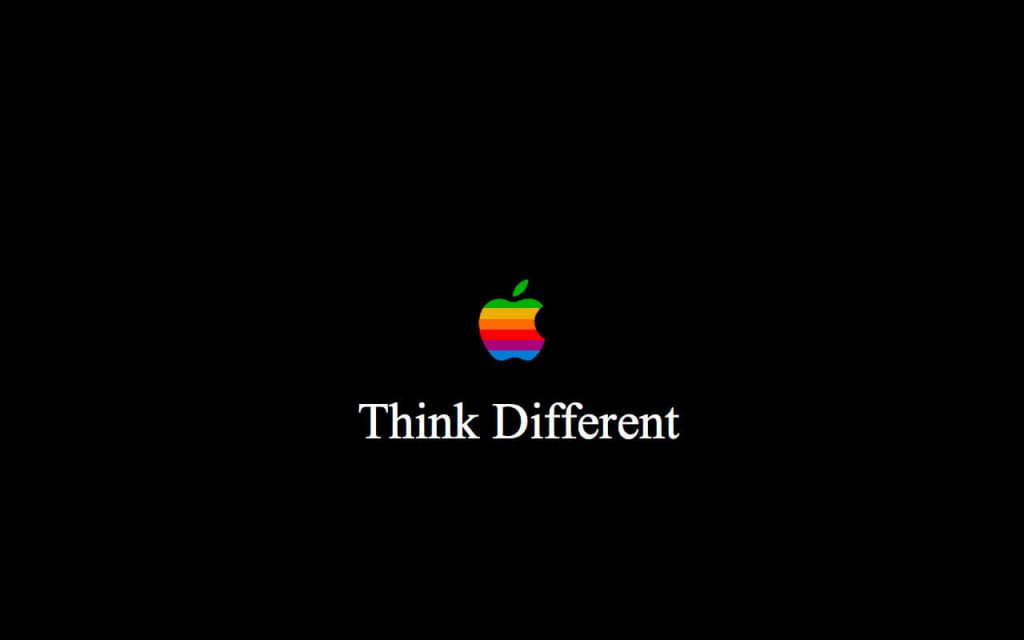If you want to get ahead of your competition, you need to know how to use psychographics in your marketing. Psychographics studies consumer behavior, including their needs, values, and attitude. Psychographics helps you segment your audience to create specific marketing campaigns for each of your target market buyer personas to increase conversions and make more sales.

What is psychographics?
Psychographic research relates directly to the activity and views of consumers. This market research goes beyond classification based on basic demographic information like gender or age. Psychography studies the psychological forces driving consumer behavior. It includes emotion and motivation, moral, ethical, and partisan values, and an inherent bias or prejudice. This market research allows marketers to analyze psychographic data to develop buyer personas and use them as the basis for a targeted message that relates to those segments.
Why use psychographic segmentation?
Psychographic segmentation is essential for marketing strategies as it allows you to highlight your product to various consumer segments. Your service becomes more dimensional, resulting in more customers. Apple uses psychographic segments to create recognizable brand identities that match consumer perception. The psychographic information helps Apple convey luxury minimalism to a broader audience and develops marketing plans for different psychographic sections.
Psychographics vs. Demographics
The main difference between psychographic data and demographic data is that psychographics focus on the customer’s psychology while demographics focus on the more factual aspects.
Regarding marketing, targeting your campaigns using psychographic segmentation will result in a more personalized message better received by your target audience. On the other hand, using demographic information will allow you to target a larger group of people with a more general message.
Depending on your product or service, one or both methods could be practical. Psychographic segmentation will benefit if you sell products heavily dependent on emotion (such as wedding dresses). If you are selling a product that is not as emotional (such as pharmaceuticals), then using demographic data might be a better option.
The best way to decide which method to use is to test both marketing strategies and see which one performs better.
Psychographic Factors to Consider
There are many different factors that you can consider when creating your psychographic segments. Some of the most common include:
–Lifestyle: How do they spend their free time, or what activities do they invest in?
–Interests: What topics are they interested in?
–Values: What do they believe in? What do they value most in life?
–Personality: What is their personality type? Are they shy or outgoing? Do they like to take risks or play it safe?
–Behavior: How do they behave online and offline? What kind of things do they buy?
You can use psychographic factors to create more targeted and effective marketing campaigns. By understanding your target audience’s psychographic factors, you can create campaigns that are more likely to resonate with them. For example, if you know that your target audience values health and wellness, you can create ads and content that focus on these topics. If you know that they are interested in new technology, you can create ads and content around the latest gadgets.
How Psychographic Data and Information are Collected
You can collect psychographic information through surveys and questionnaires that ask individuals about their lifestyles, values, and personality. This data can provide insights into how people think and make decisions, which is helpful when creating your target audience and developing marketing plans and strategies.
Other ways you can gather psychographic data to tailor market content include:
Interview existing customers and partners
One way to gather psychographic data is by interviewing existing customers and partners. Existing customers can provide insights into why they chose your product or service, what they like or don’t like about it, and how they use it in their everyday lives. Customer insight improves your product or service offering and better target your marketing efforts. Additionally, you can learn about the values and beliefs of your customer base, which can help you create more effective marketing messages that resonate with them.
Gather focus groups
You can also gather psychographic data by conducting focus groups. Focus groups involve bringing together people with similar characteristics (such as age, gender, location, etc.) and asking about their lifestyle, values, and personality. Conducting a focus group can provide valuable insights into how people in a particular demographic think and make decisions. Additionally, focus groups can help test out new marketing messages or strategies before you roll them out to a broader audience.
Observe social media activity
Additionally, you can collect psychographics through social media platforms and other online activities. By tracking what someone posts, likes, shares, and searches for online, businesses can gain valuable insights into their interests, values, and personality.
Research and investigate website analytics
Psychographics can also be gathered by observing and researching your website analytics. This includes tracking what pages people visit, how long they stay on each page, what links they click on, etc. This data can provide insights into what kind of content is most popular with your audience and what messaging they are most responsive to. Additionally, it can help you better understand how people interact with your website and where they are located.
Obtain objective third-party data
Another way to gather psychographic data is through market research data companies and analysts. These companies typically have access to psychographic segmentation examples that can be used to understand your target audience’s lifestyle, values, and personality. This information can be invaluable for businesses when developing marketing plans and strategies. Additionally, it can help you better understand your competition and what they are doing to reach their target audiences.
Psychographics Marketing
Psychographic marketing is an approach that focuses on the study of consumer personality, values, attitudes, interests, and lifestyles. It allows businesses to create targeted marketing campaigns that appeal to the psychology of their target consumers.
When creating a go-to-market plan using psychographic data, companies should consider the following:
1. What are the needs and wants of your target consumers?
2. What motivates them?
3. What are their values and beliefs?
4. What are their interests and hobbies?
5. How do they spend their free time?
6. What kind of lifestyle do they lead?
7. What kind of products or services do they typically purchase?
8. How often do they make purchase decisions?
9. What factors influence their purchase decisions?
10. What are their buying habits?
By understanding the answers to these questions, you can create marketing campaigns tailored to your target consumers’ specific needs and wants. You can then reach and convert leads into customers more effectively.
We’ve gathered some hypothetical data using the techniques outlined in the previous section, so now let’s apply our data to our marketing strategy.
Influence your prospect based on their needs and pain points
Assuming that our target market is people who are looking to improve their health and fitness, we can use psychographic data to create targeted marketing messages that appeal to their needs. For example, if our research shows that our target consumers are motivated by the desire to lose weight, we can create marketing messages that focus on helping them achieve their weight loss goals. Additionally, if our research shows that our target consumers value health and fitness, we can create marketing messages that highlight the health benefits of our products or services.
By understanding the needs and wants of our target consumers, we can create marketing campaigns that are more likely to resonate with them and convert them into customers.
Use lifestyle segmentation to identify your target market
Another way to use psychographic data is to segment your target market by lifestyle. This involves grouping people together based on the way they live their lives. For example, you could segment your target market into health-conscious individuals, busy professionals, stay-at-home parents, etc.
Once you’ve segmented your target audience, you can create marketing messages and campaigns that are specifically tailored to each group. This will help you reach your target consumers more effectively and convert them into customers.
Some businesses make the mistake of thinking that all of their target consumers want the same thing. However, this is rarely the case. People have different needs, wants, values, and lifestyles. By understanding these differences, you can create marketing campaigns that are more likely to resonate with your target consumers and convert them into customers.
Connect with your prospect where they hang out
To reach your target consumers, you need to connect with them where they spend their time. This means creating marketing campaigns explicitly targeting your target consumers’ channels. For example, if your target consumers are active on social media, you should create social media campaigns. If your target consumers are active on forums and discussion boards, you should create forum marketing campaigns.
By connecting with your target consumers where they hang out, you can reach them more effectively and convert them into customers.
Appeal to their emotions
People make purchase decisions based on their emotions. Therefore, it’s essential to appeal to the feelings of your target consumers when creating marketing messages and campaigns. For example, if you’re selling a product that can help people improve their health, you could create an emotionally charged message highlighting your product’s benefits.
By appealing to the emotions of your target consumers, you can create marketing campaigns that are more likely to resonate with them and convert them into customers.
Provide a personalized call-to-action
To maximize the conversion rate of your marketing campaigns, you should provide a personalized call-to-action for using many of your psychographic segmentation variables. This means creating a unique call-to-action tailored to each customer segment’s needs and wants. For example, if you’re targeting busy professionals, your call-to-action could be something like “Schedule a free consultation today!” If you’re targeting stay-at-home parents, your call to action could be, “Get 10% off your first purchase!”
By providing a personalized call-to-action for each customer segment, you can increase the conversion rate of your marketing campaigns and get more bang for your buck.
Psychographic Segmentation Traits
Successful market analysis requires an understanding of five types of psychographic segments.
Activity segments
People in this group are defined by their level of activity or energy. This could include people who are high-energy and always on the go or people who are more low-key and enjoy relaxing activities.
A market analysis also requires understanding people’s activity level or energy. People who are high-energy and always on the go require different products than those who are more low-key and enjoy relaxing activities. For example, a high-energy person may need more caffeine to get through the day, while a low-key person may prefer herbal tea.
Interest segments
People’s interests and hobbies play a large role in determining what products they purchase. For example, someone interested in sports is likely to buy different products than someone interested in fashion. Sports enthusiasts may purchase athletic gear or equipment, while fashionistas may buy clothes or makeup. Knowing a person’s interests can help you tailor your marketing to them more effectively.
Opinion segments
People in this group are defined by their opinions on various topics. This could include people who are pro-choice, pro-gun control, etc.
People in this group tend to be very opinionated on various topics. They may be pro-choice, believing that women should have the right to choose whether or not to have an abortion. They may also be pro-gun control, believing that there should be stricter regulations on firearms in order to prevent mass shootings.
Personality segments
This group of people is defined by their personality traits. This includes people who are extroverted, introverted, etc. These people tend to be the life of the party and are always up for a good time. They enjoy being around others and often make friends easily. They may also be seen as the “class clown” or someone who is always joking around.
Lifestyle segments
People in this group are defined by their lifestyle. This could include people who are health-conscious, environmentally conscious or have another type of alternative lifestyle. Buyer personas with alternative lifestyles may be interested in topics such as organic food, green living, and sustainability.
Does psychographics really work?
Several major media outlets have focused attention on the role of psychographic marketing in politics across the U.K. since 2016. Although some interested parties have attempted to spread fear online using psychographic profiling, the real impact of such efforts is unclear. Some studies have shown psychographic targeting can improve branded products. The effectiveness of psychographic targeting has been investigated in a series of experiments.
5 Successful Marketing Campaigns Based on Psychographics
1. Nike’s “Just Do It” Campaign

Nike’s iconic “Just Do It” campaign was based on psychographic research that showed that people respond well to motivating and inspiring messages. The campaign featured a wide range of athletes, from professional basketball players to everyday people, and used Nike’s slogan to encourage people to pursue their dreams.
2. Dove’s “Real Beauty” Campaign

Dove’s “Real Beauty” campaign was based on psychographic research that showed that people are interested in products that make them feel good about themselves. The campaign featured a series of ads and videos showcased real women of all shapes and sizes, and helped Dove become one of the most successful beauty brands in the world.
3. Volkswagen’s “The Force” Commercial

Volkswagen’s “The Force” commercial was based on psychographic research that showed that people respond well to funny and memorable ads. The commercial featured a young boy dressed as Darth Vader, trying unsuccessfully to use the “force” to control various objects around him. The commercial was a huge success and helped to make Volkswagen one of the most popular car brands in the world.
4. Apple’s “Think Different” Campaign

Apple’s “Think Different” campaign was based on psychographic research that showed that people are interested in innovative and revolutionary products. The campaign featured a series of ads that showcased some of the most influential people in history, from Mahatma Gandhi to John Lennon. It helped to cement Apple’s position as a leading technology company.
5. Old Spice’s “The Man Your Man Could Smell Like” Campaign

Old Spice’s “The Man Your Man Could Smell Like” campaign was based on psychographic research that showed that people are interested in products that make them feel more attractive and confident. The campaign featured a series of ads and videos that showcased the Old Spice man as a sophisticated and confident man and helped Old Spice become one of the most popular men’s grooming brands in the world.
Use Psychographics to Improve Your Marketing Campaigns
Psychographic marketing can be an incredibly effective way to reach your target audience. By understanding your target market’s needs, wants, and interests, you can create marketing campaigns that resonate with them on a deeper level. To create a successful marketing campaign, consider using psychographic research to guide your efforts.